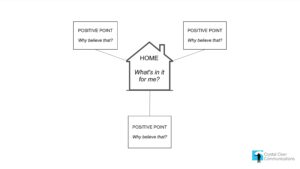
Are your internal communications boring?
Regardless of your organization, good internal communications are essential. Why? Because employees are your most important asset. When engaged and informed, employees are your best brand ambassadors. And if they’re not, they can be brand detractors, slow your productivity, and increase your turnover rate.
Yet many organizations struggle to provide internal communications that engage and inspire employees. In The 2023 state of essential workplace communications, Axios found that only 46% of employees found internal communications “helpful and relevant” and that about half of employees felt they were “clear and engaging.”
In other words, most employees find internal communications boring. That’s a big problem, because people neither pay attention to nor remember information they find boring.
Clearly, many of us are doing something wrong regarding internal communications. Here are 3 tips you can use to create more engaging internal communications:
- Make short Message Maps for each internal communications asset.
- Use surveys wisely.
- Conduct focus groups regularly.
Make Message Maps
My business partner George Stenitzer and I often write about making Message Maps for your organization, business units, and even specific products.
But you can also use short Message Maps for shorter projects, such as internal communications articles and videos. Before you begin writing your article or script, take a few minutes to think about what we call your “home” message.
The most important thing to remember when creating your home message is to focus on what’s in it for your audience. Why do they need to know this information? Why is it important to them? And if you don’t think it will be important to them, then why are you creating the article or video?
Once you have your home, come up with three reasons to justify that home, which we call “positive points.” Your home and your positive points are all you need to then draft your internal communications asset.

Why take this extra step before writing? Because it ensures the result focuses on what’s in it for your employees versus what leadership wants to say. It also shortens the time it takes to write your asset because you already know what you need to say.
Use surveys, but use them wisely
Most of my clients fall into one of two groups when it comes to surveys: They survey their employees too much, or they don’t survey them enough.
How often you survey employees depends on how agile you can be with the results. If your organization is not able to act quickly on results, then survey only once or twice a year. If you can be more agile, then sometimes quarterly surveys can be helpful to see if the actions you’re taking are moving the needle in the right direction.
While survey frequency can be important, even more important is what you do with the results. Do not survey your employees about internal communications if you aren’t going to act on the results.
Too many times I’ve heard about organizations whose employees say they want a different method or frequency of internal communications, yet leadership doesn’t want to change the status quo.
Employee surveys can be a great way to get information to improve communications, but only survey if you know you’ll be able to act on the results.
Conduct informal focus groups to improve internal communications
Focus groups can be a great way to get qualitative, real-time feedback on your internal communications. I find them to be much more effective if they’re informal.
By informal, I mean that you find a diverse group of people – from all areas of the company – and get to know them. Build relationships and trust with them. Buy them lunch once a quarter and talk to them informally about internal communications at your organization. Assure them that leadership won’t know who said what – and mean it.
For best results, get the same group together several times, and then over time, you can switch out one or two members at a time. This way, the trust you’ve built with others continues, and new members feel more comfortable. I’ve found this to be much more effective than getting a completely new group together each time.
At one company I worked with, the internal communications leader called this group the “heretics” group. Leadership came to value their input so much that they started asking us to test messages with them before we communicated to the rest of the company to ensure they would resonate.
Creating engaging internal communications doesn’t have to be difficult. Making short message maps, acting on data from employee surveys, and conducting informal focus groups can help you create internal communications that resonate with your employees.
Have questions about marketing and communications? Get answers weekly or email me at ariana@crystalclearcomms.com.
Related Posts
Want your story in the news media? Read these tips.
“Why weren’t we quoted in that story?” “Why didn’t get any coverage on our new product launch?” Sound familiar? I’ve worked with many organizations...
Are you earning brand loyalty?
I had the luxury of spending last month in Nafplio, Greece, where I was embraced by the locals. Restaurateurs, shopkeepers, and even the gentleman...
Content marketing messages with too much “me” are doomed to fail
Too many content marketers approach their marketing message from the wrong viewpoint – their own, rather than their customers’ viewpoint. That’s a huge mistake....
When you see what to say, you say what you mean
See what to say and say what you mean with a Message Map. Developing a strategic message is a big job that every organization...





